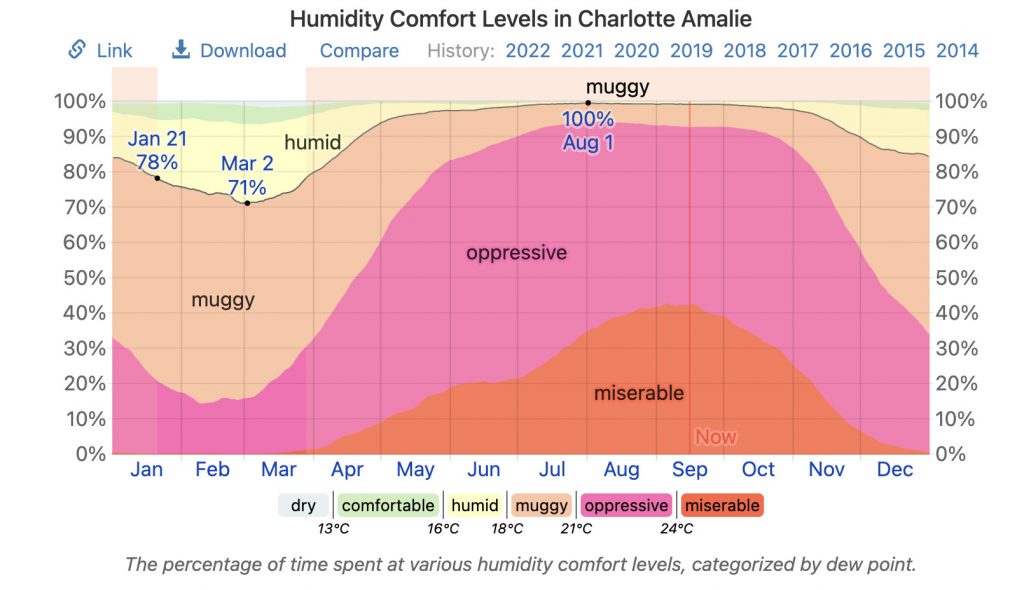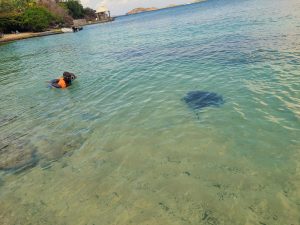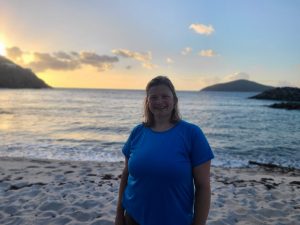We have now been in living on the island of St. Thomas, in the US Virgin Islands for just over two months, and will be here for at least another nine months for my research sabbatical. During our time so far, we’ve explored the island as a family. But most of that has been limited exploring the incredible natural beauty that shrouds the island’s turbulent history of enslavement and colonization. The beaches are the most beautiful I have ever seen, but I never imagined how many sea creatures we would encounter.
I had planned to start doing a lot of site visits as soon as the boys started school, but that has not happened. Instead I have focused my attention on my translation Fru Muus’ klage. I have a difficult time working on a project of this scope when I only have an hour here or there, and that is all there is during an academic year full of teaching and department chairing. I gained a lot of momentum on the project over the summer thanks to two amazing student researchers (more about some things we found soon!).
But it isn’t for lack of interest that I have not done more site visits yet, it is because of the weather. I started reading up on the humidity this week and stumbled upon this visual which made me both chuckle and shed a tear, all while bathed in my own sweat.
 weatherspark.com
weatherspark.com
In short, it shows that on average in September 0% of the time is comfortable, about 2% is humid, 8% is muggy, 50% is oppressive, and 40% of the time it feels miserable. So, the hikes to visit plantations and other historical locations of interest can wait until November. Then it should only be about 10% miserable.
But, like all things on the island, it isn’t cheap to remain comfortable in the heat. Knowing that air conditioning is pricey, we kept our thermostat at a conservative 77-78 degrees our entire first month while also aligning ourselves under the 4 ceiling fans. We have special blinds to keep out the sun and heat and we only let in the light we need. We got a grill and instant pot so that so that we don’t have to heat the apartment with the oven. And still our first month’s bill was $415. Given gas prices were over $6/ gallon when we got here, maybe that shouldn’t have been a surprise.
In other weather news, we are preparing for Tropical Storm Fiona. We are fortunate to live at pretty high elevation, in a poured concrete house with high-impact windows. The latest report is also that it has gone more south than expected; instead of 60 mph winds previously forecasted, it should be 35-45. The biggest concern I’m hearing is mudslides, landslides and flooding.
CNN’s coverage of Fiona
Weather Channel video
Like many locals, we do not have access to a generator. Already in our short time here, there have been 9 power outages. Local media are using the word “inevitable” to describe the loss of power this weekend, with the only question being for how long. Our landlady speculates that it will be for a minimum of 48 hours. For perspective, two months after hurricane Maria in 2017 (which was much worse than what is anticipated this weekend!) 73% of Virgin Islanders were still without power.
So we’ve filled our pantry, have 25 gallons of drinking water (also filled the bathtubs with water because the toilets here don’t work without power), charged everything up, taken out cash, and also downloaded a bunch of shows to hopefully keep a 5 year old occupied for a few days. Our focus for the next few days will be keeping water out of the apartment and keeping our very active kiddo engaged and content inside, without power. And, I have prepared 4 liters of cold brew to keep me content, while Ben has all the fixings for dark and stormys.
Economic disparities here are seen and felt everywhere. So our well-wishes are specifically with the many households who live in areas that will likely flood or have mudslides, and especially those with wooden houses. A number of locals have generously shared information and tips, and also their stories of previous storms. These harrowing accounts only reinforce just how resilient the islanders are.
But if there is one silver lining with the impending storm, it is that we almost have a full cistern of water. The cistern is like a huge basement room that collects rainwater, the one dedicated for our apartment alone holds 16,000 gallons. Global warming has brought a serious drought to the island and water is a precious commodity. Normally the summers here have far more rain. This year what came was all at once, and at the very end of the summer. The cistern will overflow out the backyard if we have too much, so might as well use it before it does!
So because our cistern is now full from the last storm, we were able to take long showers two days in a row. Up until then it’s been a quick rinse-lather-rinse. If you run out of water you have to have it delivered, which many households needed over the summer, it is ridiculously expensive (~ $300-500/ month depending on amount).
So, we’re as ready as we can be and are taking guesses as to how long our power will be out.

